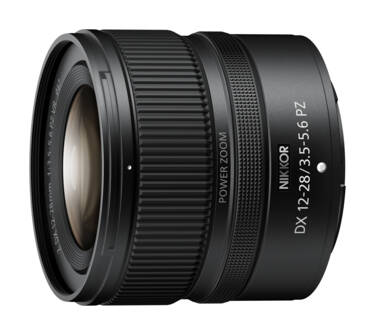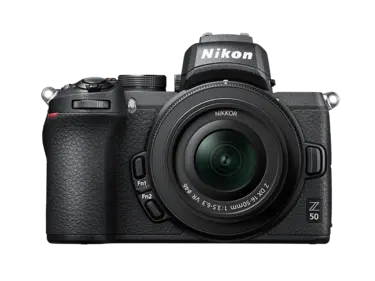Go ultra-wide on video for immersive drama
If you want to lift your video output and create a cinematic feel, an ultra-wide lens is the way to go
There seems to be a standard assumption about focal lengths in video, which is that ultra-wide angles (so about 24mm and wider) are for your amateur selfie stick vlogging — and standard (so around 50mm) and above are ‘cinematic’ and therefore ‘professional.’
This is based on a simple truth: we see ultra-wide footage all day, every day, and that’s because it’s the footage we all shoot on our smartphones. Lenses on phones tend to be set at or near the ultra-wide range, with a zoom function.
But, before you stick your 50mm on and hit record, take a moment, because an ultra-wide lens is a fantastic tool to help you create powerful narratives and make amazing footage that will engage and immerse your audience.
Choosing to shoot with ultra-wide puts you in good company. Directors such as Kubrick, Tarantino, Villeneuve are big ultra-wide fans. Are you blown away by multiple Oscar-winning cinematographer Roger Deakins’ work on movies such as No Country for Old Men or 1917? Ultra-wide angles are a big part of his playbook.
Nikon Team
More than meets the eye
There’s a reason why pretty much every Western movie starts with a sweeping vista. It instantly shows a ton of scenery in one go, and literally ‘sets the scene’ for the movie.
This is where ultra-wides really shine, because this focal length optically packs much more into a frame than we are used to seeing with our own eyes (a human eye is around 50mm, hence why this focal length is often referred to as a ‘standard’ lens). An audience immediately sees ultra-wide as something ‘cinematic’ even if the composition is static, for example a desert scene with a lone figure way off in the distance.
Try a 16mm focal length across a seascape or skyline. It looks incredible, with that very wide angle seeming to stretch even a fairly mundane view into a never-ending dramatic sweep. For even more effect, crop your frame from the standard 16:9 to a more classic 2.39:1 ‘letterbox’ in your video editor.
So, yes, ultra-wides are great static. But a slight pan movement across a scene maximises that visual compression, making scenery seem to ‘swell’ across the frame. And if you have a wide-angle ranged zoom, a slight opening up of the angle over time gives a pretty spectacular, and slightly unsettling, breathing of the composition.
But don’t assume ultra-wide is just for natural landscapes. The converging perspectives in cities — roads, skyscrapers, phone lines and the like, are made for ultra-wide shots. Get your camera down low and you can turn even the most average street scene into something dramatic, as streets and buildings seem to disappear into infinity.
Subjective choice
Using an ultra-wide in landscape format gives you a huge frame to place your subjects in, and therefore a true creative choice about where, and how, you place them.
If you add a radio microphone, you can be far away, placing the subject as a tiny figure in a huge landscape. Better still, with something like the NIKKOR Z 24-200mm f/4-6.3 VR superzoom, you can start tight on your subject and zoom out to show them in the middle of rolling fields as they are speaking.
Imagine a subject talking about sea pollution. Put them up close and to the side of your frame and fill the background with rolling seascape. This is a great storytelling device, because it links the person to the subject immediately in the viewer’s mind and gives them something to interact with via gestures (pointing to a coastline, for example). This stops an interview from seeming flat and ‘talking head-like.’ An interview on a telephoto only gives you one ‘plane’ of interaction. On ultra-wide, your subject can occupy the same frame as something literally miles away.
Get involved
If you start using ultra-wides with subjects, you’ll realise that you are much closer to them. Further away, as you are with a telephoto, your video camera is more of an observer. Closer, it can be a participant in the scene.
An easy way to discover this for yourself is to get your camera off the tripod and ask your subject to walk as they talk while you walk in front of them (if you’re shooting with a Z 30 or Z fc simply use the vari-angle monitor and you won’t have to walk backwards!). Ultra-wides are great for this kind of tracking shot, as the subject seems to be moving through the scene slightly quicker than seems natural and is therefore very dramatic.
When we move with the camera, we start to see two things. First, the ultra-wide’s ability to ‘bend’ space around your subject as it moves and you move with it, and, secondly, how it allows us to get really close to a subject. Both of which add up to making the everyday more distinctive and the dramatic breath-taking.
NIKKOR Z DX 12-28mm f/3.5-5.6 PZ VR
NIKKOR Z DX 12-28mm f/3.5-5.6 PZ VR

Think of those movies you love where you feel as if you are ‘in’ the action, where the directors that seem to drag you into the screen with those scenes that feel as if you’re on a rollercoaster journey along with the characters.
Often, they are using those very wide angles to help propel the action, because ultra-wide lenses are great at giving a heightened sense of movement, while keeping the subject front and centre. Think of Mad Max: Fury Road, where Charlize Theron’s giant truck stays centre frame as the incredible scenery just hurtles past it, bending round that central point as if the camera is parting a wave through the action.
And you don’t need Hollywood budgets to achieve amazing shots. A little DIY goes a long way. The iconic, disorientating first-person shots in The Evil Dead were created by director Sam Raimi taping a camera to a pole and running round a forest. Stanley Kubrick shot half of A Clockwork Orange being pushed around in a wheelchair with the camera in his lap. And the reason they could make this DIY improvisation look incredible? Ultra-wides. So budget isn’t your limit, just your imagination.
Live life in widescreen
In the end, there is a lot to love about ultra-wides in video, because creatively and practically, they are on your side. That very wide angle reduces camera shake when you’re moving. Plus, the big depth of field afforded by wider angles (along with the superb Nikon AF) means you can spend more time worrying about your composition and story rather than your focusing.
So next time you’re looking at your nicely framed, neatly composed scene and it also seems a bit ‘whatever,’ say to yourself: “Time to get moving and break out the ultra-wide.”
Explore more in ultra-wide
The ultimate guide to ultra-wide lenses
Time to get zooming for video creativity
For endless inspiration




